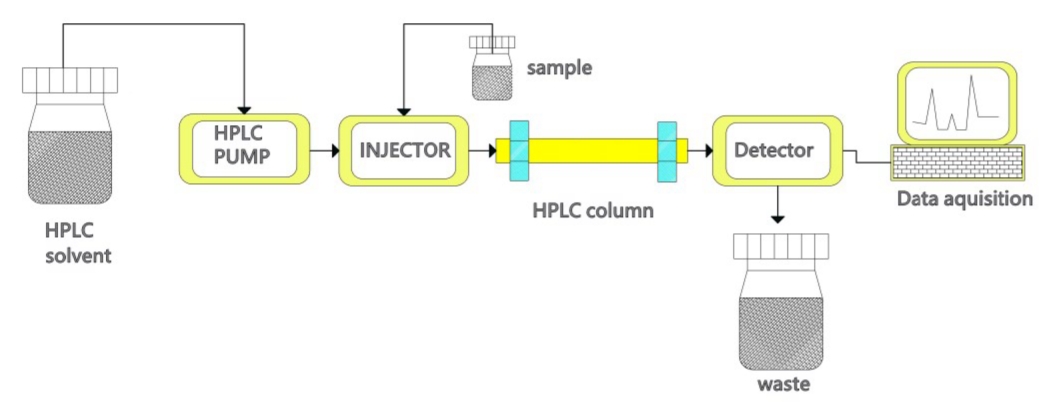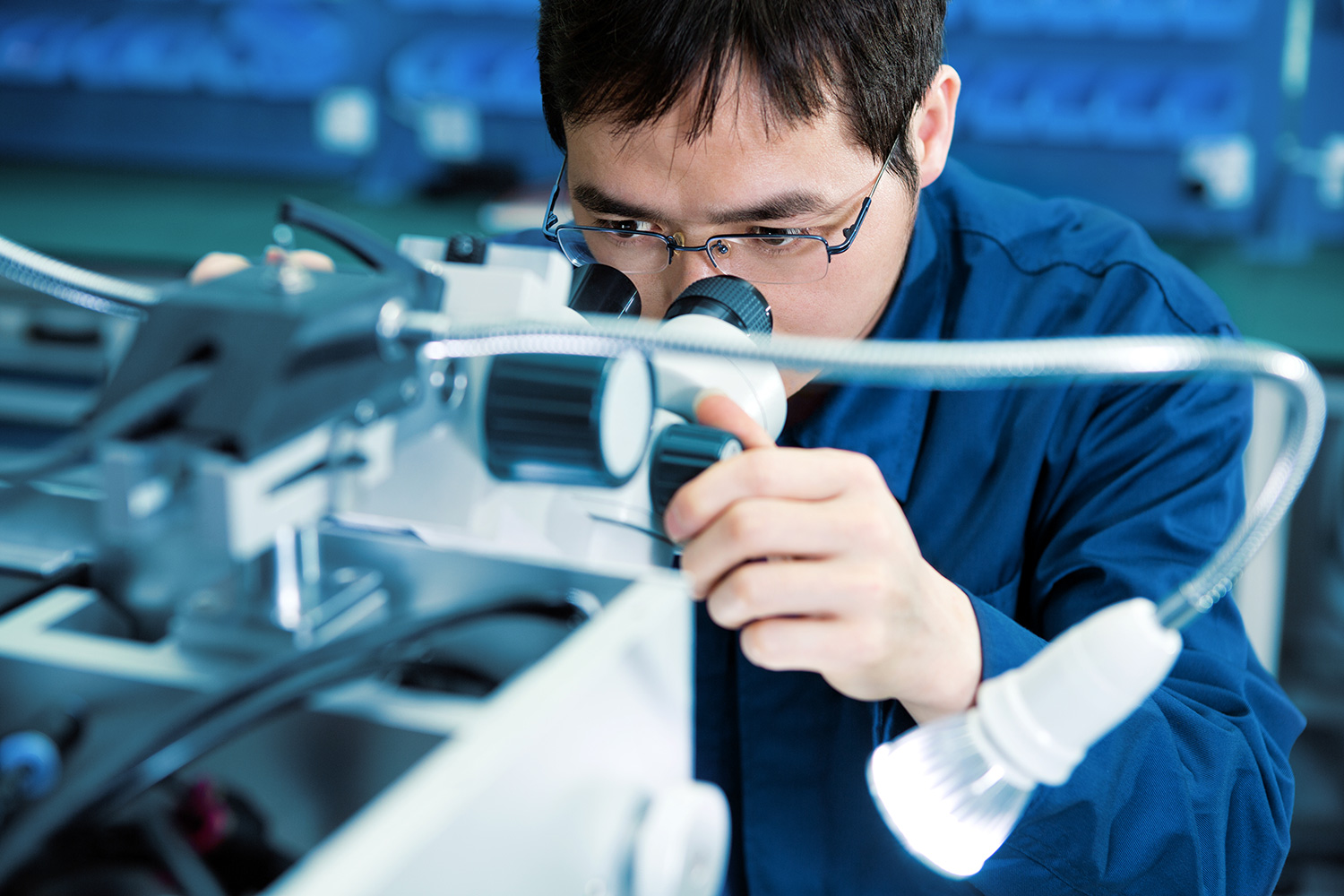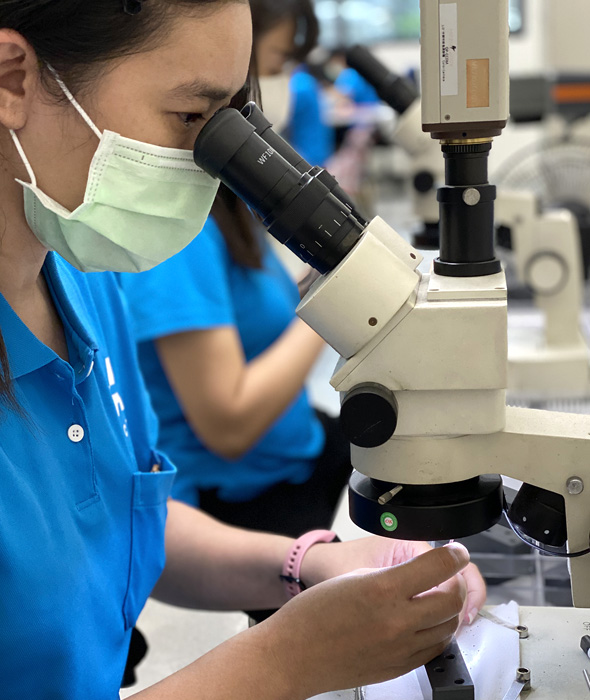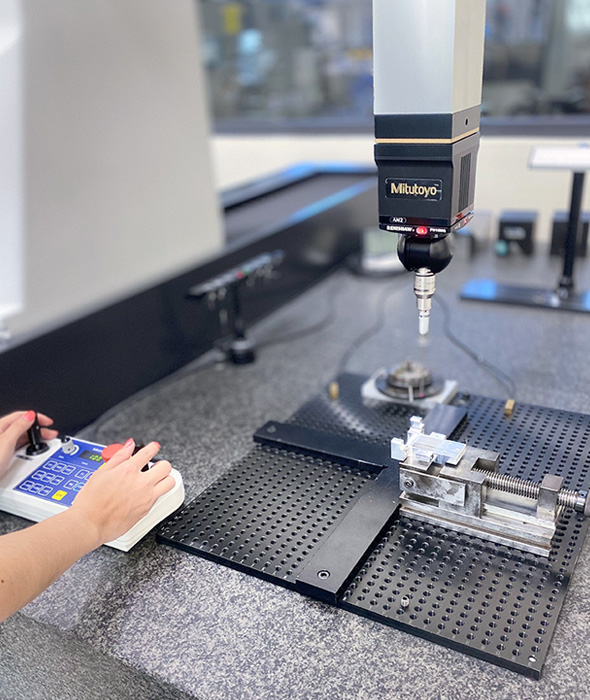How ACHB Manufactures World Class Liquid Chromatography Components
ACHB is a Taiwan-based advanced technology company that specializes in the manufacture of components used in advanced analytical instrumentation for medical and life science applications. ACHB has extensive manufacturing experience in this field and is able to assist clients with both the development of new equipment and the manufacture thereof. This article will focus on how ACHB can leverage its manufacturing experience with high-pressure liquid chromatography equipment to manufacture superior equipment at an affordable price.
What is liquid chromatography?

Liquid chromatography typically uses the gravity force to pass the mobile phase through the stationary phase. However, when a significantly higher operational pressure (50-350 bar) is used to move the mobile phase through the system, the technique is called High-Performance liquid chromatography (HPLC).
High-performance liquid chromatography (sometimes referred to as high-pressure liquid chromatography (HPLC)) is a chemical separation technique used to determine the molecular make-up of a supplied sample. This sample is injected into the system, followed by a solvent that is then pumped into the system at a pressure of up to 100 MPa. The solvent is referred to as the "mobile phase." It transports the sample through the column, which is called the "stationary phase". The column is packed with silica, alumina, or cellulose particles. Simply put, different molecules move through the column at different rates due to a difference in the interaction of the sample with the stationary and mobile phases. There are 5 key separation mechanisms:
- Normal phase (separation based on polarity)
- Reverse phase (separation based on hydrophobic interactions)
- Size exclusion
- Ion exchange
- Bio-affinity
Regardless of the separation method, groups of the same molecule will exit the column at a different point in time and are then collectively analyzed by the detector.
How ACHB leverages in-house expertise to meet client requirements
Clients who work with ACHB benefit from their extensive machining capabilities and in-depth knowledge of the manufacturing of components used in HPLC systems. These components include high-pressure pump parts, injector mixing chambers, and detector mounting hardware. Each of these parts needs to be precisely and consistently machined to ensure peak HPLC performance. Listed below are some of the key benefits of using ACHB to manufacture these parts.
1. Advanced machining capabilities
HPLC machines are specialist equipment that requires parts to be manufactured with accuracy, consistency, and quality in mind. Subpar components will ultimately result in poorly performing equipment. Listed below are some common challenges when machining parts for HPLC and how ACHB can leverage its extensive experience to overcome these challenges.
“By using our technical know-how we have been able to change machining parameters, tooling,
and machining sequences to eliminate burrs while maintaining the required surface finish.”
Michael Wang, CEO ACHB
- Post machining burrs
One of the key features of an HPLC injector system is the precisely machined, intersecting microchannels used to mix samples with the relevant solvents or reagents. One of the challenges with this component is the formation of burrs during machining. The machining task is made all the more difficult by the diameter of these channels, with some being as small as 0.3 mm. Wherever these channels intersect, some burrs will form as the tool pierces a channel wall and moves into the next intersecting channel. During testing or operation, the high pressures present in the system may detach these burrs and convey them throughout the HPLC system, damaging sensitive downstream components.
ACHB uses specialized machining strategies to minimize the formation of burrs within these microchannels, while also employing visual microscopic inspection processes to detect potential burrs after machining. Highly skilled deburring engineers are also tasked to inspect the parts under a microscope and expertly remove these burrs with hand tools. This attention to detail ensures that any burrs that may have formed are detected and removed before releasing the part for simulated operational testing.
- Surface finishes
Surface finish is a critical factor in HPLC performance and ACHB understands the need for using the correct machining strategies to meet component requirements and ensure optimal part performance. The requirements of these parts are often not even listed on manufacturing drawings. An example of this is the tool mark orientation which can have a significant impact on part performance.
Surface finish is critical to maintaining laminar flow conditions within injector microchannels. Turbulent flow within the injector system ultimately reduces the accuracy and precision of the equipment. High-quality surface finishes with a roughness of 32 µm are achieved with a circular mill finish. In some cases, the specific configuration of the microchannels may necessitate secondary processes to ensure surface finish requirements are within client specifications.
ACHB can select the appropriate process to achieve the requirements for that application and consistently maintain a high-quality surface finish across thousands of parts. This is due to the extensive internal training programs and tool management processes such as tool life management and tool selection.
- Secondary processing
When it comes to surface treatment like anodizing or plating, ACHB adapts the part dimensions to ensure dimensional tolerances are maintained after plating. In some cases, there's a need to perform finishing operations like grinding or polishing to ensure exact tolerances and surface finishes are maintained.
Some secondary operations are handled by trusted external partners. This allows ACHB to work closely with these companies to set up a workflow that results in high-quality parts that consistently remain within required tolerances.

2. Manufacturing problem-solving partner
ACHB aims not only to offer world-class machining services but also to be a problem-solving partner that is invested in the successful and efficient deployment of HPLC equipment. ACHB offers clients advice on how to achieve the required performance parameters while still making sure parts can be manufactured cost-effectively. Design for Manufacturability (DFM) is a critical aspect of product design that is sometimes overlooked, especially if design activities take place without regular interaction with the manufacturer. ACHB has extensive DFM experience and can help designers in the early phase of the design process to develop manufacturable products.
In addition to this, ACHB understands the importance of the order of machining operations. This means that parts are machined in a strategic order so that critical dimensions can be checked between each operation and that the part meets all the required parameters.
ACHB can guide from the initial conceptual design phase to ensure design engineers develop products within the realm of what is possible to manufacture. ACHB also ensures that parts are manufactured according to the product intent. For example, some critical requirements are often left out of manufacturing drawings and ACHB has the experience to recommend machining processes that they know will improve part quality and performance.
All of this is made possible by ACHB's extensive experience within the life science manufacturing field along with experienced insights into the design life cycle of HPLC components. While CNC machines can produce parts with extremely high precision, it takes an experienced manufacturer to leverage the capabilities of these machines to achieve an optimum combination of technical performance and manufacturability.
“We are allowing designers to push the limits of scientific possibility within a manufacturable boundary.”
Michael Wang, CEO ACHB
3. Quality assurance and testing
ACHB can assist clients with the development of testing equipment to ensure that the components that they manufacture meet customer performance requirements before being released for installation on HPLC systems. ACHB develops custom testing machinery that puts the parts through a set of real-world tests at the operating conditions of the HPLC equipment where the parts will be installed. When designing this testing equipment, ACHB makes use of the same parts used on the HPLC products like valves to ensure testing accurately matches reality.
This is a critical advantage, as no additional testing is required on any parts produced by ACHB. Components can be installed straight out of a client's inventory without any need for the added cost incurred by in-house testing. This allows clients to focus on spending resources where they can best benefit the company.
ACHB strictly follows ISO 9001 processes and procedures, thus ensuring that consistent quality is maintained throughout the entire process. ACHB takes this one step further with in-house data management processes to monitor machine tooling in real-time. This real-time monitoring allows operators to ensure that tools are changed out before they pose a risk to component quality. Cell manufacturing principles ensure that components are continuously monitored after each process to make sure they are within the required tolerance and surface finish parameters.
ACHB makes use of a range of testing equipment to ensure part conformity as listed below:
- High magnification microscopes: Used to check surface finishes as well as to detect and remove machining burrs.
- CMM (Coordinate Measuring Machine): Used to measure overall part geometric tolerances.
- Laser scanner: Used to measure part surface contours.
Dimensional measurements are performed in a temperature-controlled environment to ensure measurements are indicative of those experienced under operating conditions.

high-magnification binoculars.

4. Cost savings
The hidden costs of inexpensive parts can be significantly higher than the manufacturing cost of the part. One such hidden cost is downstream quality assurance processes that can add significant cost to a part, even more so if parts are not manufactured according to specification thereby requiring extensive rework. ACHB eliminates this risk through the implementation of robust in-house testing and inspection processes which allows clients to focus on adding value to finished assemblies instead of spending additional resources to inspect and test manufactured components.
Another potential cost saving for using ACHB is the reduction of shipping costs. Since ACHB is based in Taiwan, the company is strategically positioned to serve clients that make use of international facilities to assemble their equipment. For example, US-based companies can save up to 30% when compared to manufacturing locally in the US and shipping components to be assembled in countries like Singapore.
Why use ACHB?
Clients can rely on ACHB to produce high-quality components through sound engineering practices and robust testing and monitoring procedures. ACHB has also developed in-depth training programs to ensure all technicians and engineers can maintain company manufacturing standards. This allows customers the peace of mind and confidence to simply install manufactured components from inventory without having to be concerned about quality. This frees up additional resources to be directed to more value-added functions like the hiring of additional design engineers or quality assurance personnel specifically focused on the assembly and testing of the full HPLC system. To learn more about how we can leverage our extensive industry experience to assist you with your unique requirements, contact an ACHB representative.